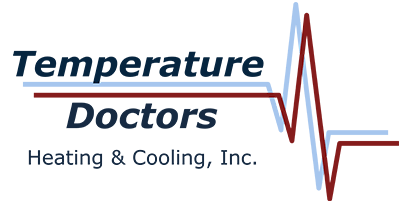
A furnace is often a background player in your home, helping keep you warm in the cold winter months. It frequently won't be noticed until something breaks down.
One source might be that your furnace has a cracked heat exchanger. It can potentially be hazardous, so it’s critical to know the evidence of a cracked heat exchanger and what to do if you believe that might be the problem.
What Is a Heat Exchanger in a Furnace?
A heat exchanger helps move heat from the combustion chamber in your furnace to the air that circulates inside the ventilation. It generally accomplishes this with coils or tubes that heat up the air while functioning as a barrier to keep gas created in the combustion chamber, called flue gasses, from escaping out into your home.
Is a Cracked Heat Exchanger Dangerous?
Because of its important role, it shouldn't come as a surprise that a damaged heat exchanger can pose a risk. Cracks in the heat exchanger can permit dangerous gasses – such as carbon monoxide, which can be lethal – to be distributed through your home.
For that reason, never run your furnace if you suspect it has a cracked heat exchanger, as letting it run could make your entire household sick. Reach out to an HVAC professional immediately if you think your furnace has a cracked heat exchanger that needs repair.
Four Signs of a Cracked Heat Exchanger:
- Furnace switches off: Cracks in the heat exchanger can cause your furnace to switch off.
- Unusual Smells: If the air leaving your furnace has an intense chemical smell, it could be a sign gas is leaking through cracks in your heat exchanger. These gasses, which may smell like formaldehyde, are a common warning sign.
- Carbon monoxide alarm initiates or you feel poisoning symptoms: If a cracked heat exchanger is releasing carbon monoxide in your home, your carbon monoxide alarm should go off or family members might experience signs of carbon monoxide poisoning. Side effects include headaches, dizziness, weakness, nausea, vomiting or feeling tired. If your alarm goes off or you feel unusually tired, get out of the home immediately and then call for help.
- Soot: If you find black sooty buildup on the exterior of your furnace, it’s an indication something might be seriously wrong.
What You Should Do if Your Furnace Heat Exchanger is Cracked
If you suspect your furnace has a cracked heat exchanger, hire a pro well versed in furnace installation Rockford as soon as possible so they can examine your system and, if needed, handle a furnace heat exchanger replacement. Costs often fluctuate depending on the situation, but estimates can roughly suggest $1,000 to $3,000.
Estimates aside, the good news is that heat exchangers are often protected by the warranty. It's a good idea to check the warranty paperwork on your furnace, since while the warranty might not cover the entire cost of repairs, it still may significantly reduce your bill.
How to Avoid a Cracked Heat Exchanger in Your Home
One of the easiest ways to minimize the risk of problems in your furnace overall is through regular furnace maintenance. Furnaces work the best when they work efficiently. Calling a certified professional to examine your furnace for old parts, clogged filters and other likely problems can keep you from getting a big bill later on.
It’s also beneficial to inspect your furnace filters every few months – it’s recommended some filters be replaced every 90 days or sooner if they are dirty or grimy. While the filters aren't a part of the heat exchanger itself, the strain of drawing air through a clogged filter makes your entire furnace work more vigorously to accomplish its job. And the harder your furnace needs to run, the more strain components like the heat exchanger will sustain.
